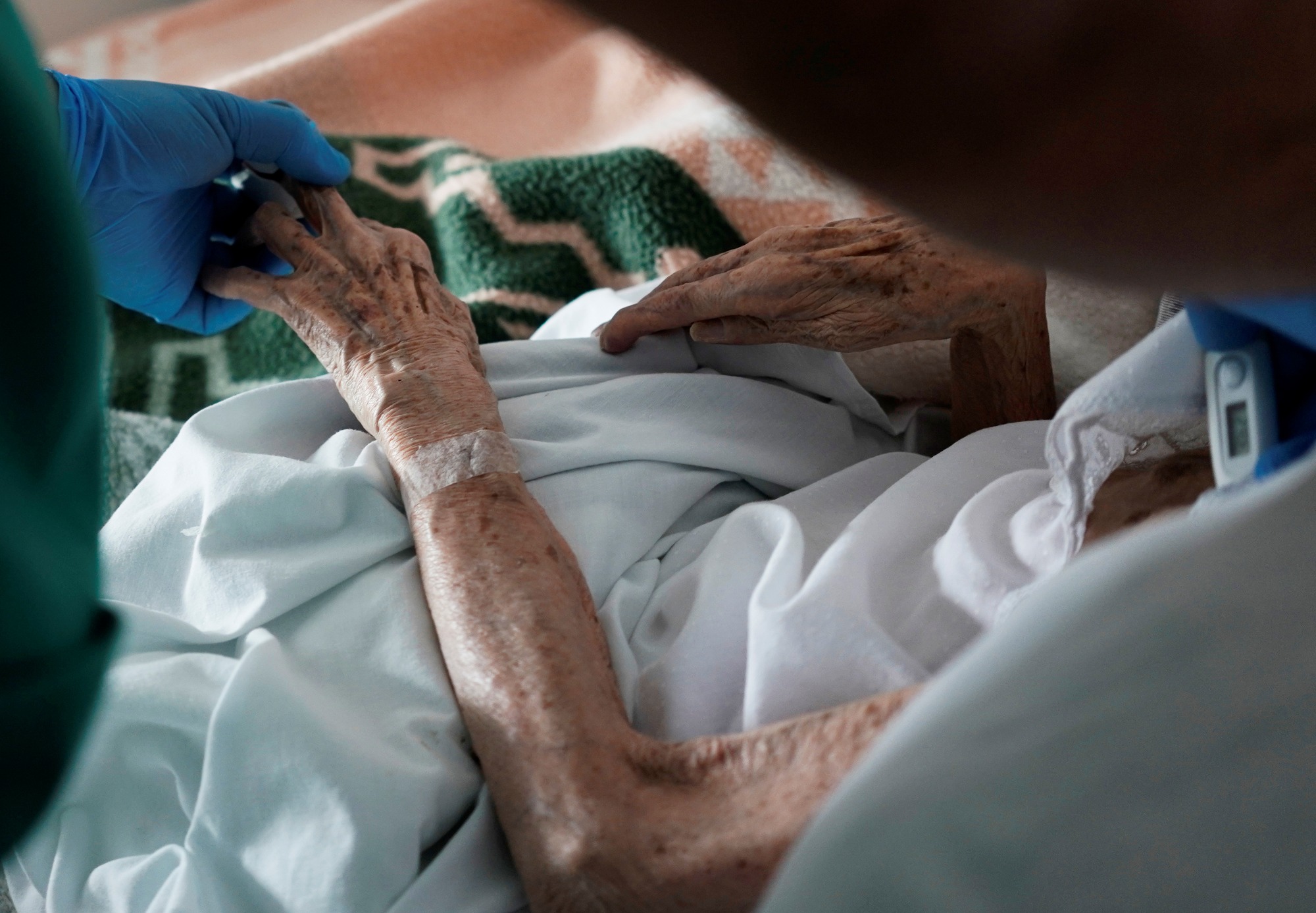
Dying Virtually: Pandemic Drives Medically Assisted Deaths Online
The coronavirus has stripped many of a say in the manner and timing of their own deaths, but for some terminally ill people wishing to die, a workaround exists. Medically assisted deaths in America are increasingly taking place online, from the initial doctor’s visit to the ingestion of life-ending medications.
Assisted dying laws allow terminally ill, mentally competent patients in 10 U.S. jurisdictions to hasten the end of their life. Waiting periods of 15 to 20 days mean that patients with acute COVID-19 won’t likely meet the requirements of these laws.
But the move to digitally assisted deaths during the pandemic has enabled other qualified patients to continue to exercise the right to die. While telemedicine is helping some people die on their own terms, it also makes the process harder on family members, who must now take a more active role in their loved one’s final act.
Assisted dying in America
I have spent the last four years studying assisted dying in America, particularly in Oregon and Washington, which have the country’s longest-standing assisted dying laws. California, Colorado, the District of Columbia, Hawaii, Maine, Montana, New Jersey and Vermont also allow medical assistance in dying.
A quirk in these laws has enabled the process to go virtual. While extremely restrictive in most ways, U.S. assisted dying laws don’t require a physician or other health care provider to be present at an assisted death.
Assisted dying laws require two doctors to independently evaluate a patient’s request for medical assistance in dying. But patients must be physically able to ingest the life-ending medication themselves, a safeguard that ensures they are acting voluntarily.
In Canada, by contrast, clinicians typically administer the lethal dose through an injection. Normally that’s a faster, safer and more effective method. But COVID-19 concerns are compelling some Canadian providers to suspend assisted deaths.
Attending to the dying
Though U.S. physicians aren’t required to attend an assisted death, many patients and their families do have help. In 2019, according to the Oregon Health Authority, 57% of all assisted deaths in Oregon were attended by a physician, another health care provider or a volunteer.
Trained volunteers – many of them former nurses, social workers and behavioral health experts – are critical in helping patients navigate the tricky path toward an assisted death. They know which physicians are willing to see aid-in-dying patients and which pharmacies stock the necessary medications.
In the United States, doctors prescribe a compound of four drugs – digoxin, diazepam, morphine and amitriptyline – to be mixed with water or juice. Within minutes of drinking the cocktail, the patient falls asleep, the sleep progresses to a coma, and eventually the patient’s heart stops.
Volunteers help mix the medication and supervise the ingestion, allowing families to be emotionally present with a dying loved one.
Now, because of the coronavirus, volunteers are accompanying patients and families over Zoom, and physicians complete their evaluations through telemedicine, based on recommendations released by the American Clinicians Academy on Medical Aid in Dying in March 2020.
Telehealth – a health care solution long used in remote areas – has become a critical tool of the COVID-19 pandemic. But some aid-in-dying physicians have drawn on telemedicine to reach far-flung patients for years.
“My patients love telemedicine,” Dr. Carol Parrot, a physician who lives on an island in Washington, told me during a Skype interview in 2018. “They love that they don’t have to get dressed. They don’t have to get into a car and drive 25 miles and meet a new doctor and sit in a waiting room.”
Parrot says she sees 90% of her patients online, visually examining a patient’s symptoms, mobility, affect and breathing.
“I can get a great deal of information for how close a patient is to death from a Skype visit,” Parrot explained. “I don’t feel badly at all that I don’t have a stethoscope on their chest.”
After the initial visit, whether in person or online, aid-in-dying physicians carefully collate their prognosis with the patient’s prior medical records and lab tests. Some also consult the patient’s primary physician.
‘Tough and tender situations’
The pivot to telemedicine hasn’t significantly changed that process. But patient advocacy organizations and physicians say the pandemic has amplified existing problems of access to assisted dying.
“These are tough and tender situations even without COVID,” said Judy Kinney, executive director of the volunteer organization End of Life Washington, via email.
Invariably, some terminally ill patients who wish to die face barriers. Some assisted living and nursing facilities have policies against assisted dying for religious reasons.
During the pandemic, residents in these institutions who lack access to a digital device – or the skills to videoconference with a doctor – may not be able to qualify for the law, according to Dr. Tony Daniels, a prescribing physician from Portland.
Meanwhile, a family member who objects to assisted dying may more easily undercut the process when a volunteer isn’t there in person to make sure a patient’s final wishes are carried out.
Facilitating death
Dying via telemedicine can be hard even on family members who stand behind their loved one’s decision, my research finds. Without a volunteer or physician present, families must assume a more active role in the dying process.
That includes mixing the life-ending medications themselves. Pre-pandemic, many families told me that preparing the lethal cocktail would make them feel like they were facilitating – and not just morally supporting – a loved one’s death. They were glad to outsource this delicate task.
Now they don’t have that choice.
Yet the option to assist in a loved one’s final act may be a comfort in this pandemic. It allows dying people to choose the manner and timing of their own death – and ensures they won’t be alone.
[You’re too busy to read everything. We get it. That’s why we’ve got a weekly newsletter. Sign up for good Sunday reading. ]![]()
Anita Hannig, Associate Professor of Anthropology, Brandeis University
This article is republished from The Conversation under a Creative Commons license. Read the original article.
Image: Reuters


